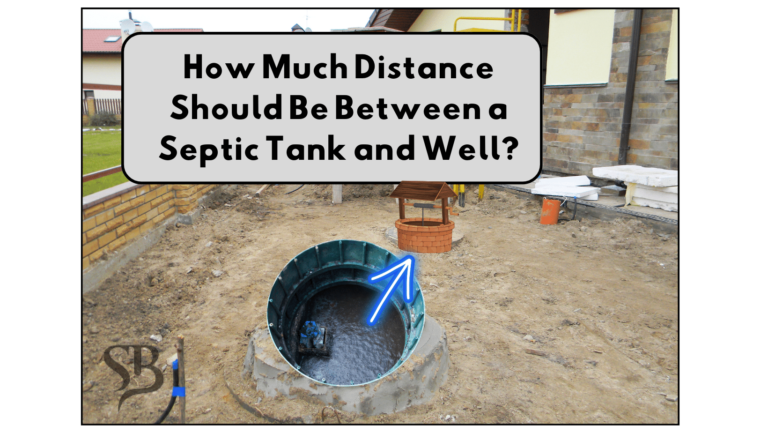You’re settling into your countryside home, relishing the tranquility and self-sufficiency it offers. As you become acquainted with the intricacies of your septic system, you’ve stumbled upon a critical detail: the distance between your septic tank and the distribution box.
While it might sound like a minor detail in the grand scheme of things, understanding this distance is vital to the seamless operation of your septic system. So, how far from a septic tank is the distribution box?
The ideal distance between a septic tank and the distribution box typically falls within the range of 5 to 10 feet. This positioning is crucial to ensure the efficient functioning of your septic system.
The septic tank is responsible for initial wastewater treatment, including the separation of solids, and the distribution box acts as a gateway to evenly disperse the partially treated effluent into the leach field.
Proper spacing allows for adequate settling of solids in the septic tank and prepares the effluent for uniform distribution, preventing overloading of any specific area in the leach field.
However, it’s essential to note that specific distance requirements can vary based on factors such as soil type, local regulations, and system design.
To determine the exact distance for your distribution box, consult local authorities and septic system professionals for a site-specific assessment.
Why Do You Need a Distribution Box?
Before we delve into the importance of the distribution box’s placement, let’s establish a solid understanding of what the distribution box is and why it’s crucial in your septic system.
A distribution box, often referred to as a D-box, is a vital component of your septic system. Its primary purpose is to distribute the effluent (partially treated wastewater) evenly from the septic tank to the leach field or absorption field.
Essentially, it acts as a traffic cop, directing the flow of wastewater to ensure uniform distribution.
Also read: How Much Distance Should Be Between a Septic Tank and Well?
How the Distribution Box Functions
The distribution box plays a pivotal role in the wastewater treatment process. Once effluent exits the septic tank, it flows into the distribution box.
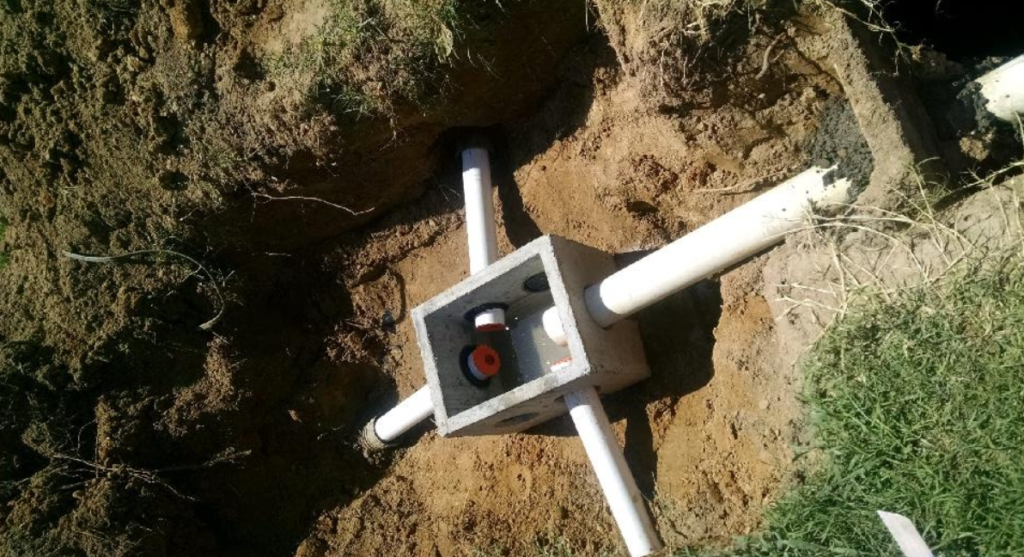
From there, it is evenly distributed into the network of pipes that lead to the leach field. This equal distribution ensures that every part of the leach field receives its fair share of effluent for further treatment.
Key Components and Structure
Distribution boxes are typically made of durable materials like concrete, plastic, or fiberglass. They are designed with multiple inlet and outlet ports, allowing for the connection of pipes.
The number of ports depends on the design and size of the distribution box, with common configurations including four, six, or eight ports.
Also read: Toilet Bowl Slowly Loses Water: How to Fix
The Distribution Box’s Location in the Septic System
Now that you understand the distribution box’s role let’s explore where it’s typically located within the septic system and why its placement is essential.
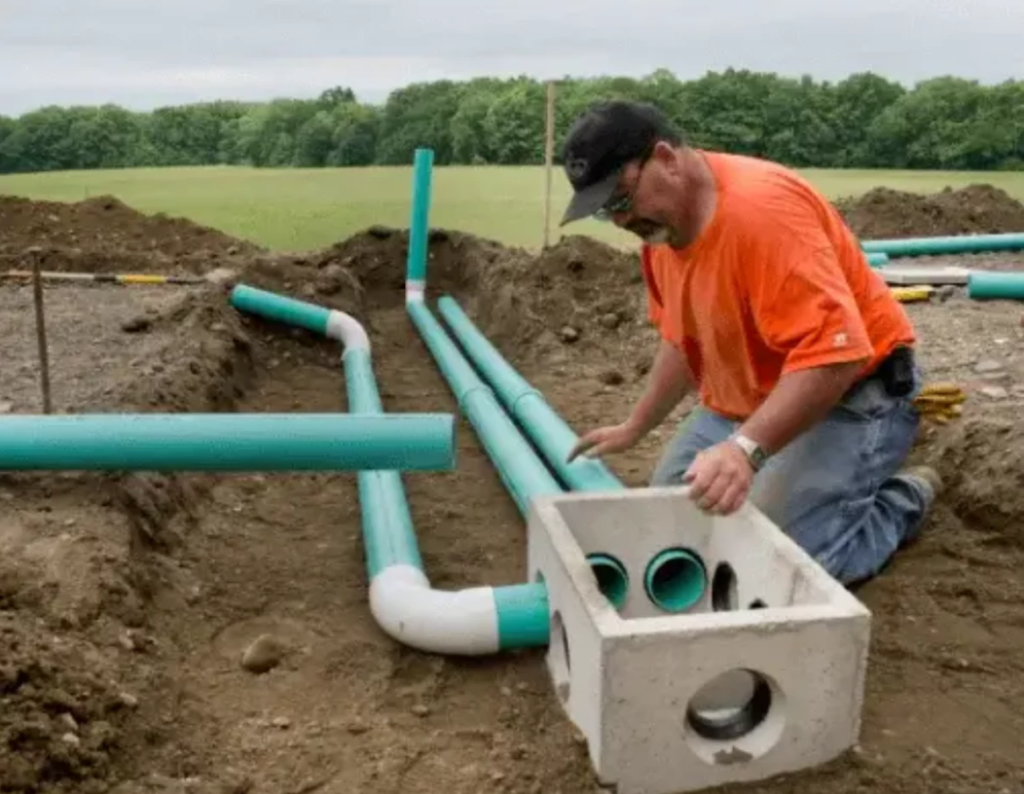
Placement of the Distribution Box Within the Septic System
The distribution box is strategically placed between the septic tank and the leach field. It acts as a pivotal junction point where effluent from the septic tank is collected and then dispersed into the leach field’s network of pipes. Its location ensures that effluent is evenly distributed across the leach field for further treatment.
Its Role as the Hub for Effluent Distribution
Think of the distribution box as the heart of your septic system’s circulatory system. It receives effluent from the septic tank and ensures that it flows uniformly into the leach field’s pipes.
This uniform distribution is critical for preventing overloading in certain areas of the leach field, which can lead to clogging, soil compaction, and system failure.
Also read: How Deep Are Septic Tanks Buried?
Why the Distance of the Distribution Box from the Septic Tank Matters
The distribution box’s distance from the septic tank is more than just a matter of convenience. It directly affects the system’s efficiency, treatment effectiveness, and compliance with local regulations.
An improperly placed distribution box can lead to uneven effluent distribution and potential system failures.
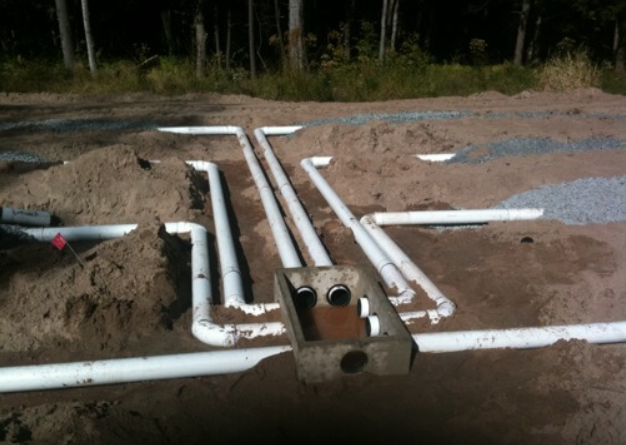
Also read: Why Does My Bathroom Smell Like Sewage
Factors Influencing Distribution Box Placement
Several factors come into play when determining the ideal placement of the distribution box within your septic system.
These factors can vary from one property to another and should be carefully considered during installation.
Soil Type and Permeability Considerations
The type of soil on your property significantly impacts distribution box placement. Different soils have varying levels of permeability, affecting how quickly they can absorb effluent.
Sandy soils, for instance, allow for faster percolation, while clayey soils are less permeable. The choice of distribution box location must take soil characteristics into account to ensure uniform effluent distribution.
Local Regulations and Guidelines
Local health departments and environmental agencies often set specific regulations and guidelines governing septic system design, including distribution box placement.
These regulations are established to safeguard public health and the environment. Adhering to local regulations is not just a matter of compliance but also essential for the proper functioning of your system.
System Design and Size Affecting Distribution Box Placement
The design and size of your septic system can influence distribution box placement. Systems with larger septic tanks or more extensive leach fields may require distribution boxes with different configurations and capacities.
The size and layout of the leach field, as well as the number of distribution lines, are factors that must be considered during placement.
Also read: What’s The Maximum Distance From Toilet To Septic Tank?
How far is the distribution box from the septic tank?
Now that you appreciate the factors influencing distribution box placement let’s explore what industry guidelines and local regulations recommend regarding the distance between the septic tank and the distribution box.
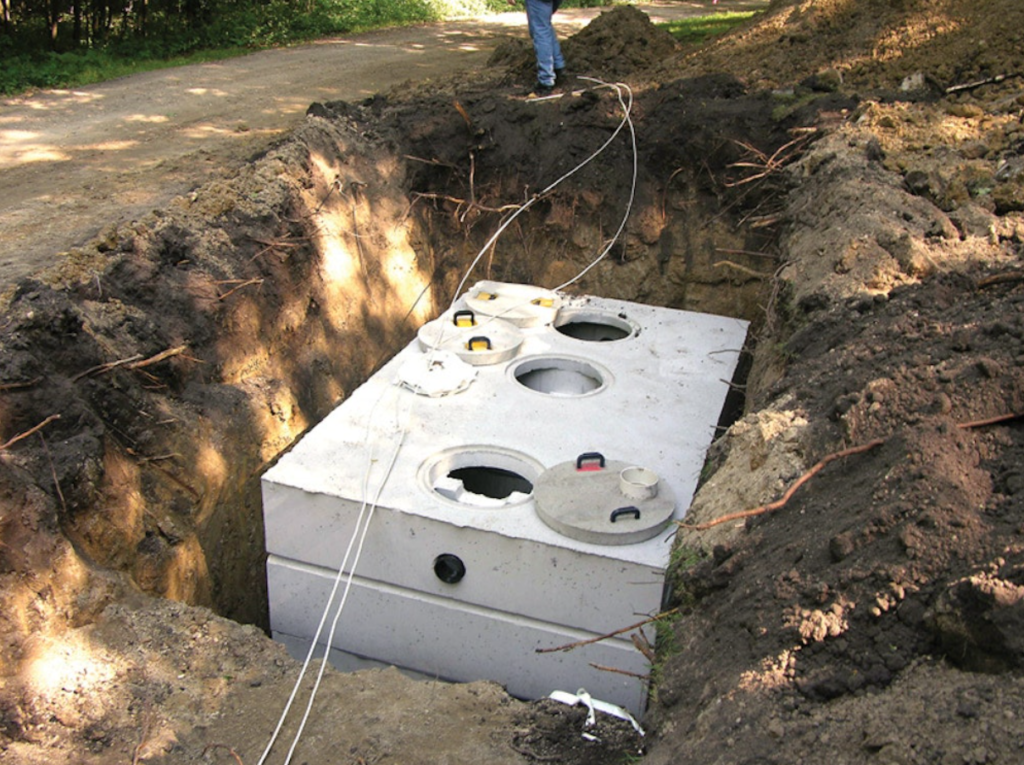
While specific recommendations may vary depending on factors like soil type and system design, a common industry guideline suggests that the distribution box should be placed approximately 10 to 15 feet downstream from the septic tank’s outlet.
This distance allows for proper settling of solids in the septic tank and the initial treatment of effluent before it enters the distribution box.
Variations in Distance Based on Soil Conditions
The type of soil on your property can influence the ideal distance between the septic tank and the distribution box.
In areas with sandy soil that allows for rapid effluent percolation, the distribution box may be placed closer to the septic tank.
Conversely, in areas with clayey or less permeable soil, a greater distance may be necessary to ensure even effluent distribution.
Local Regulations and Their Impact on Placement Requirements
Local regulations often dictate specific requirements for distribution box placement. These regulations consider factors like soil conditions, environmental protection, and system design.
To ensure compliance with local regulations, it’s essential to consult with your local health department or environmental agency and engage professionals for site-specific assessments.
Calculating the Right Distance
Now that you understand the factors influencing distribution box placement let’s explore how to calculate the right distance between your septic tank and the distribution box. This is a crucial decision that requires careful consideration.
Soil Percolation Tests and Site Assessment for Placement Determination
To determine the optimal distance, soil percolation tests are often conducted on your property. These tests assess the soil’s permeability, helping to understand how quickly water can pass through the soil.
The results of these tests play a pivotal role in determining the appropriate distance for your distribution box.
Consultation with Local Authorities and Professionals
Consulting with local health authorities and septic system professionals is invaluable during the placement calculation process.
They can provide expert guidance on local regulations, assess soil conditions, and consider system design specifics. Their expertise ensures that the distribution box is positioned optimally for efficient wastewater distribution.
Also read: Why Does My Bathroom Sink Smells Like Sewer
Factors to Consider When Determining the Optimal Distance
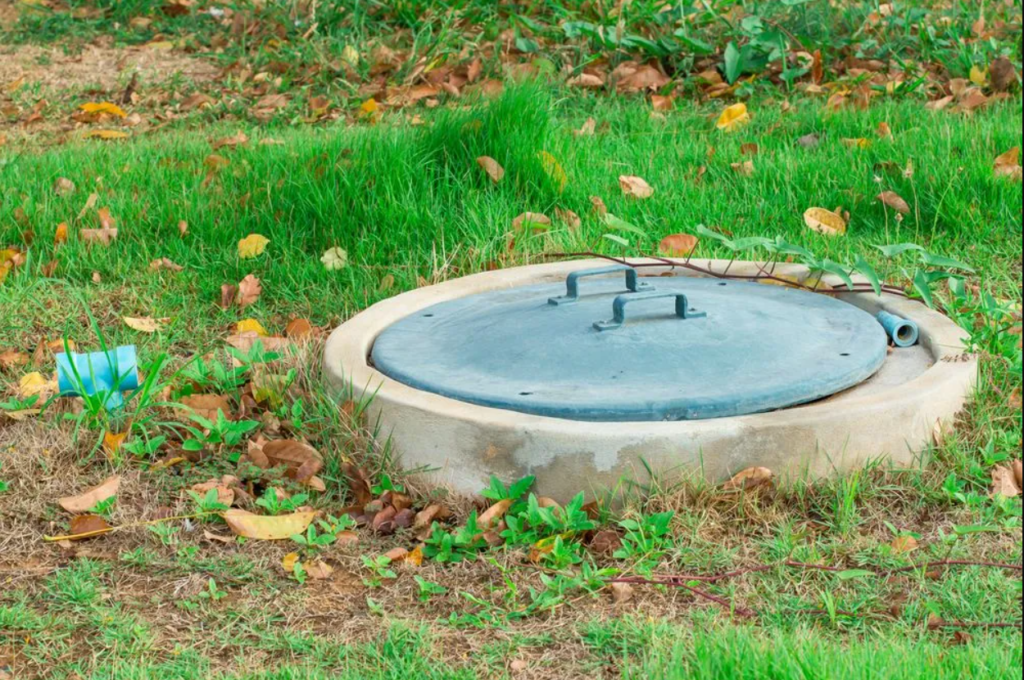
Several factors should be considered when determining the ideal distance between your septic tank and the distribution box:
Household Water Usage and Flow Rate
Consider the water usage patterns in your household. Larger households with higher water consumption may require a distribution box closer to the septic tank to accommodate the increased flow rate of effluent.
Understanding your household’s water usage is critical in making this calculation.
Number of Distribution Lines and Their Length
The number of distribution lines in your leach field and their length play a role in determining the distribution box’s placement.
More distribution lines may necessitate a larger distribution box or specific configurations to ensure even effluent distribution.
Future Expansion or System Modifications
If you anticipate expanding your home or making significant renovations in the future, consider the potential impact on your septic system.
Planning for future changes in water usage can help avoid the need for costly system modifications down the line.
Also read: How Much Does It Cost to Install a Saniflo Bathroom?
Distribution Box Location and Property Layout
In addition to distance considerations, the size, layout, and aesthetics of your property must be factored into distribution box placement.
Ensuring that the distribution box is well-suited to your property’s specific characteristics is crucial for long-term system functionality.
Adapting Placement to Property Size and Layout
Property size and layout can significantly influence distribution box placement. Smaller properties may have limited options for placement, while larger ones offer more flexibility.
The distribution box’s location should adhere to property boundaries and take into account existing structures and landscaping.
Overcoming Challenges in Distribution Box Placement
Challenges such as uneven terrain, large trees, or existing structures on your property can complicate distribution box placement.
Experienced professionals can help you overcome these challenges while ensuring that the distribution box is positioned optimally for efficient effluent distribution.
Aesthetics and Landscaping Considerations
Distribution box placement can also impact the aesthetics of your property and landscaping.
Some homeowners choose to conceal the distribution box with landscaping features or vegetation to maintain the visual appeal of their outdoor space.
Ensuring Proper Installation and Maintenance
Once you’ve determined the ideal location for your distribution box, the focus shifts to proper installation and ongoing maintenance to ensure the longevity and efficiency of your septic system.
Also read: How To Get Rid Of Black Spots On Bathroom Ceiling
The Role of Professionals in Distribution Box Installation
Professional installation is essential to ensure that your distribution box is correctly placed, securely sealed, and adequately connected to the leach field’s pipes.
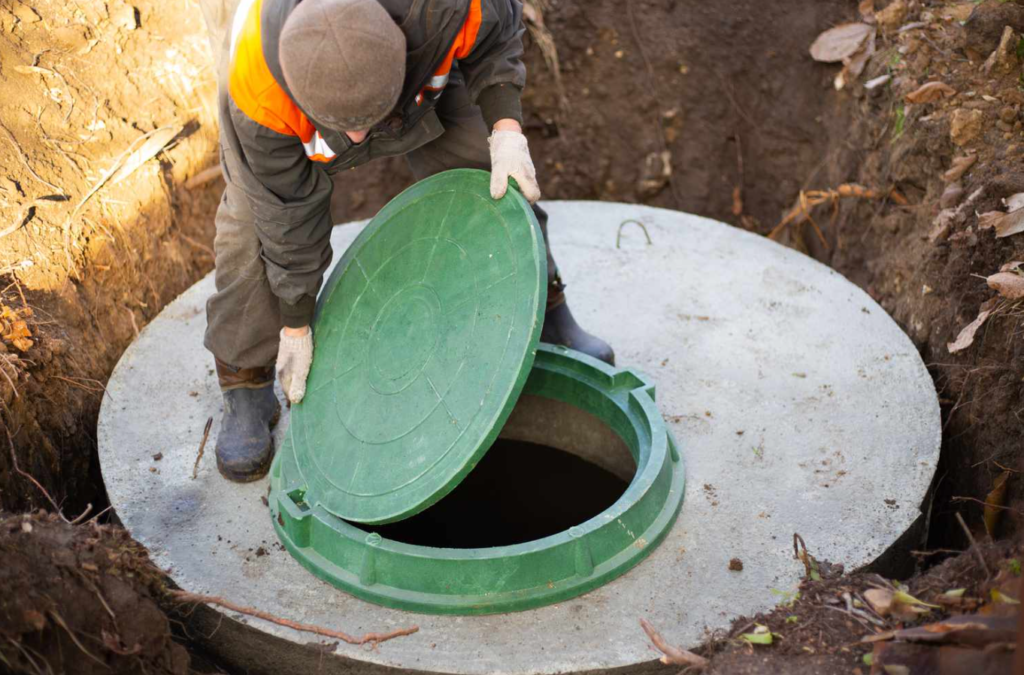
Experienced installers can also address potential issues during the installation process, ensuring a smooth transition from the septic tank to the leach field.
Regular Inspection and Maintenance for Optimal Function
Regular inspection and maintenance are critical for the continued functionality of your distribution box and septic system as a whole. Key maintenance tasks include:
- Inspection: Periodically inspect the distribution box for signs of damage, wear, or clogs. Address any issues promptly to prevent distribution problems.
- Clearing Blockages: In some cases, distribution lines may become blocked due to debris or roots. Regular maintenance includes clearing these blockages to maintain even effluent distribution.
- Routine Pumping: Depending on your system’s design and size, pumping the distribution box may be necessary to remove accumulated solids and maintain proper function.
Addressing Signs of Distribution Box or System Issues Promptly
Vigilance is key when it comes to the maintenance of your distribution box.
Be on the lookout for signs of distribution box issues, such as uneven effluent distribution in the leach field or wet spots in your yard.
Addressing these signs promptly can prevent system failures and costly repairs.
Also read: Are Bathroom Rugs Out of Style?
Conclusion
The distance between your septic tank and the distribution box may seem like a minor detail, but it’s a crucial factor in the proper functioning of your septic system.
Proper placement of the distribution box ensures even effluent distribution, prevents overloading of certain areas in the leach field, and promotes the long-term health of your system.
In conclusion, always consult with local authorities, engage professionals, and adhere to regulations when determining the placement of your distribution box.
By doing so, you’ll enjoy a septic system that efficiently manages wastewater, protects your property, and contributes to the preservation of the environment.
Also read: Max Distance from Septic Tank to Leach Field
What is the role of a distribution box in a septic system?
A distribution box, also known as a D-box, is a crucial component of a septic system. Its primary purpose is to distribute partially treated wastewater (effluent) evenly from the septic tank to the leach field or absorption field. It acts as a junction point, directing the flow of wastewater to ensure uniform distribution for further treatment.
Why is the distance between the septic tank and distribution box important?
The distance is important to ensure the proper operation of the septic system. It allows for adequate settling of solids in the septic tank and prepares the effluent for uniform distribution into the leach field. Improper placement can lead to uneven effluent distribution, potential system failures, and non-compliance with local regulations.
How far should a distribution box be from a septic tank?
The ideal distance between a septic tank and the distribution box typically falls within the range of 5 to 10 feet. This distance is crucial for the efficient functioning of the septic system, allowing for proper settling of solids in the septic tank and uniform distribution of partially treated effluent into the leach field.




